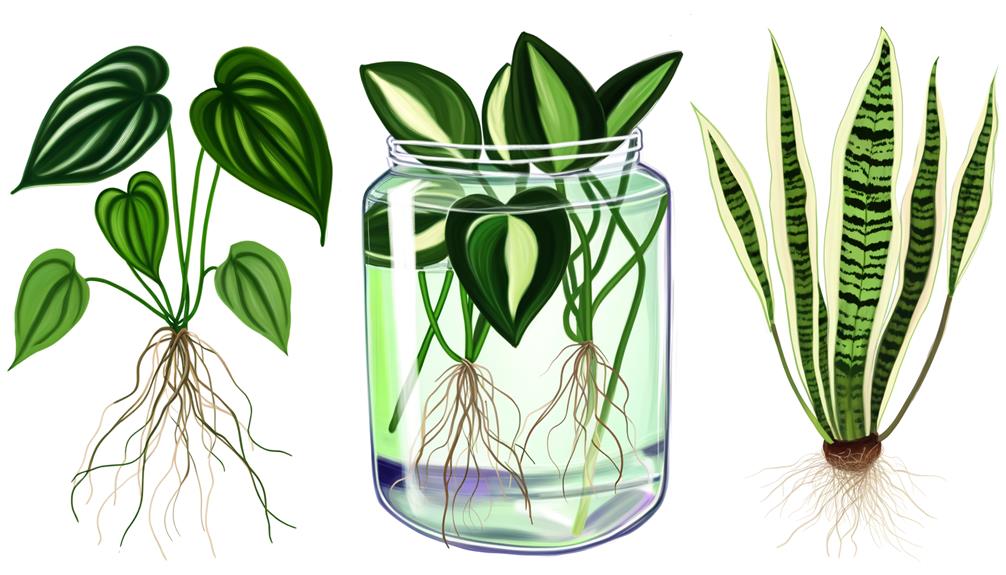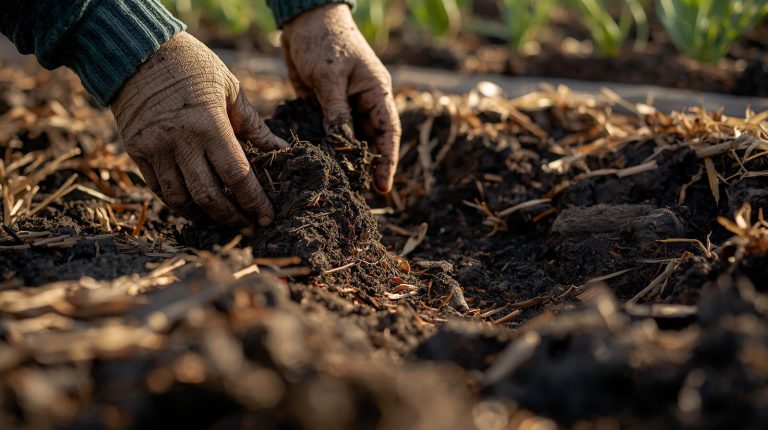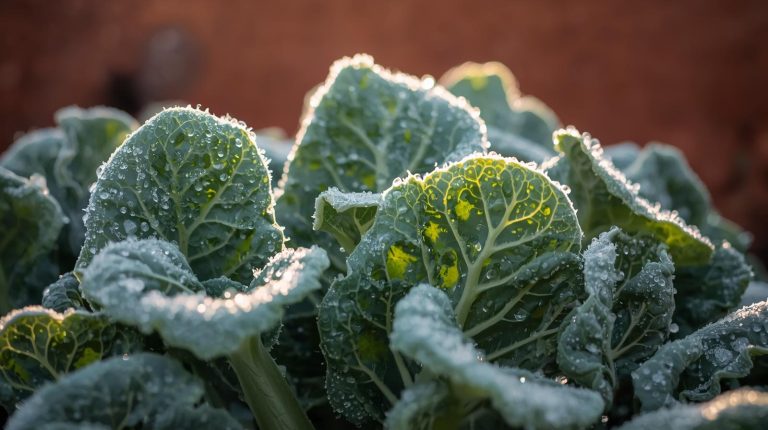When aiming to propagate indoor plants in water, tropical vines like Pothos and Philodendron excel, showcasing rapid root development. Species such as Fiddle Leaf Fig and Rubber Plant are successful tree options, benefiting from rooting hormone and bright, indirect light.
Shrubs like Pothos and Spider Plant are resilient choices, while herbaceous plants such as mint and basil offer a cost-effective way to enhance indoor greenery. Significantly, succulents like Echeveria thrive with regular water changes and bright light for healthy growth.
These are just a few of the diverse range of indoor plants that can be effectively propagated in water, setting a strong foundation for your indoor gardening endeavors.
Key Takeaways
- Tropical vines like Pothos and Philodendron are excellent choices for robust root development.
- Trees like Fiddle Leaf Fig and Rubber Plant thrive with rooting hormone and bright indirect light.
- Shrubs such as Pothos and Philodendron are resilient and thrive in various indoor conditions.
- Herbs like Mint and Basil are cost-effective choices, needing clean water and bright light.
- Succulents like Echeveria and Jade Plants thrive in water with regular changes and bright light.
Tropical Vines
Tropical vines, such as popular species like Pothos and Philodendron, are widely recognized as excellent candidates for water propagation due to their rapid and robust root development capabilities.
These vines are like the sprinters of the plant world, quickly shooting out roots when placed in water, making them perfect for impatient gardeners who want to see results fast. Not only do they root quickly, but they also do so with gusto, ensuring a strong foundation for lush growth.
When rooting tropical vines in water, it’s like giving them a luxurious spa treatment. They get to soak up all the nutrients they need, promoting vibrant green leaves and that classic trailing nature that makes them perfect for indoor decor.
Watching the roots grow in water is like witnessing a magic show right in your own home – it’s mesmerizing and satisfying, especially for beginners who may feel a bit unsure about their green thumbs. So, if you want a plant that thrives in water and brings a touch of the tropics indoors, these tropical vines are your best bet.
Trees for Water Propagation
When considering water propagation for indoor plants, certain tree species like the Fiddle Leaf Fig, Rubber Plant, and Avocado show potential for successful root development when placed in water.
- Rooting Hormone Application: Using rooting hormone can expedite the root development process for tree cuttings in water propagation.
- Light Requirements: Providing bright indirect light is essential for the growth of tree cuttings undergoing water propagation.
- Water Maintenance: Regularly changing the water and ensuring it is at an important temperature are vital factors in enhancing the success rate of tree cuttings in water propagation.
These tree species offer not only the opportunity to expand your indoor plant collection but also a fun and engaging way to witness the growth process firsthand. By following the proper care procedures and maintaining a watchful eye on the progress of your water-propagated tree cuttings, you can enjoy the satisfaction of nurturing new plants from the comfort of your home.
Shrubs Ideal for Water Propagation
Shrubs such as Pothos, Philodendron, and Spider Plant are highly recommended for water propagation indoors due to their suitability for developing strong root systems in a water environment. These shrubs, known for their resilience and easy-care nature, make them perfect candidates for beginners looking to dabble in plant propagation.
By starting these shrubs in water, enthusiasts can observe the fascinating root growth process before moving them to soil, ensuring a robust foundation for future growth. Pothos, Philodendron, and Spider Plant are particularly well-suited for water propagation, thriving in various indoor conditions and adding a touch of greenery to any space.
The joy of watching roots sprout and develop in water can be a satisfying experience for those nurturing these shrubs indoors. So, grab your jars, fill them with water, and get ready to witness the magic of Pothos, Philodendron, and Spider Plant thriving in a water propagation setup!
Herbaceous Plants in Water
Ideal for water propagation due to their root development capabilities, herbaceous plants like mint, basil, sage, lemon verbena, and coleus offer a cost-effective and straightforward method for expanding your indoor herb garden.
Mint and basil, in particular, are known for their quick rooting abilities, making them perfect choices for beginners diving into the world of water propagation. Lemon verbena and sage also thrive in water, providing an easy way to enhance your herb collection indoors.
- Mint and basil root quickly in water, making them suitable choices for beginners.
- Lemon verbena and sage can also be propagated effectively in water, expanding your herb garden effortlessly.
- Clean water, proper temperature maintenance, and bright indirect light are essential for the successful water propagation of herbaceous plants like mint and basil.
Succulents for Water Propagation
Succulents, such as Echeveria, Sedum, and Jade Plants, can be effectively propagated in water by allowing cuttings to callous before submerging them. When propagating succulent cuttings in water, it is vital to remember that these plants have unique needs compared to other species.
Succulents are adapted to store water in their leaves, stems, or roots, making them more prone to rot if overwatered. To guarantee successful water propagation, it is essential to change the water regularly and provide bright, indirect light to encourage root development.
Although succulent cuttings may take longer to establish roots in water compared to other plants, the process offers the advantage of easy monitoring of root growth. This method also allows for the cuttings to absorb essential nutrients from the water, promoting healthy development.
When converting succulents from water to soil, it is important to handle the delicate roots with care to prevent damage and help the plants adjust smoothly to their new growing medium.
Humid Environment Plants
Plants originating from humid environments exhibit a natural propensity for thriving through water propagation indoors, benefiting from the controlled moisture levels conducive to successful root establishment. These tropical plants, accustomed to high humidity levels, find water propagation as a suitable method for their growth.
Here are some key points to keep in mind when propagating humid environment plants in water:
- Tropical Vines and Trees: Species like Monstera deliciosa and Ficus lyrata, commonly found in humid tropical regions, can easily propagate in water, taking advantage of the moisture-rich environment to develop strong roots.
- Herbaceous Plants: Plants such as Pothos and Philodendron, which thrive in humid conditions, are excellent candidates for water propagation, allowing them to establish roots and grow vigorously.
- Succulents: Certain succulents like Pilea peperomioides, though not traditionally associated with high humidity, can still benefit from water propagation by ensuring a well-hydrated start for root development.
Easy Monitoring of Root Development
How can the transparency of water containers aid in closely monitoring the development of roots in plants propagated through water? Clear containers play an important role in water propagation by offering a window into the underground world of root growth.
Whether you choose a stylish glass jar or a simple plastic cup, the see-through nature of these vessels provides an unparalleled view of your plant’s root development. This visual aid allows you to track the progress of root growth and assess the overall health of your propagated plants with ease.
Monitoring root development in water propagation serves as a significant indicator for determining when a plant is ready to make the shift to soil.
By regularly observing the root system through the clear walls of the container, you can make informed decisions about when to replant, ensuring a smooth change and successful establishment in a new medium.
Additionally, the transparency of the water container enables you to detect any issues such as root rot or stunted growth promptly, allowing you to intervene and adjust care routines as needed.
Low Maintenance Water Propagation
For those seeking a hassle-free method of propagating indoor plants, low maintenance water propagation offers an accessible and efficient technique. This method is perfect for beginners and busy individuals looking to expand their plant collection without much effort. Here are some key points to contemplate:
- Ideal for Various Plants: Plants like Pothos, Spider plants, and African violets thrive in water propagation, making it a versatile option for different species.
- Promotes Root Growth: Water propagation promotes healthy root development, allowing you to witness the growth process firsthand.
- Easy Monitoring of Plant Development: By growing plants in water, you can easily monitor their progress, ensuring they are thriving and developing as expected.
Low maintenance water propagation not only simplifies the process of growing new plants but also adds a fun element to observing the roots’ growth. This technique is cost-effective, low effort, and yields satisfying results in promoting green living through plant multiplication opportunities.
Occasional Water Changes
Regular maintenance of the water in your propagation setup is essential for the best growth and health of your indoor plants. When propagating plants in water, occasional water changes play a critical role in sustaining a healthy environment for root development.
Changing the water weekly is important to maintain water quality and prevent algae growth, especially for plants like Pothos and Spider Plant. For plants such as African Violet and Begonia, regular water changes are necessary to provide essential nutrients and oxygen to the roots.
Consistent water changes every two weeks are recommended for plants like Peace Lilly and Pancake Plant to support their overall well-being and growth. To prevent root suffocation and promote growth, changing the water every 3 weeks is advised for plants like Aluminum Plant and Diffenbachia.
Preventing Bacteria Growth
Proper maintenance of water quality is essential in preventing bacterial growth when propagating plants in a water-based environment. To guarantee successful propagation and avoid issues like root rot, it is critical to pay close attention to water hygiene and prevent bacterial contamination.
Here are three necessary tips to keep bacteria at bay:
- Regular Water Changes: Changing the water frequently helps eliminate the risk of bacterial contamination and keeps the environment fresh for plant roots to thrive.
- Clean Water Supply: Using clean, chlorine-free water is pivotal to preventing harmful bacteria from developing in the water, safeguarding the health of your propagated plants.
- Container Hygiene: Regularly cleaning the container in which the plants are propagated and renewing the water supply are effective ways to prevent bacteria buildup and maintain a healthy environment for plant growth.
Using Sterile Tools
To guarantee the successful propagation of indoor plants through the water method, utilizing sterile tools is essential for maintaining a hygienic environment and preventing the introduction of harmful pathogens to the plant cuttings.
When engaging in water propagation, it’s important to prioritize cleanliness to promote healthy root development. By sterilizing tools such as scissors or pruning shears before making any cuts, you greatly reduce the risk of infections that could impede root growth. Clean tools not only aid in preventing the transmission of diseases between plants during propagation but also maintain a pristine environment for the plant cuttings to thrive.
Proper hygiene practices with sterile tools are fundamental in fostering the overall health and vitality of the propagated plants. So, remember, keeping it clean isn’t just for show; it’s the secret sauce for successful water propagation and robust root development.
Cinnamon Treatment for Cuts
Paying attention to the hygiene of plant cuttings during water propagation is paramount, and one effective method to enhance their health is through the application of cinnamon, known for its natural fungicidal properties and rooting hormone capabilities.
When using cinnamon treatment for cuts in water propagation, consider the following:
- Antifungal Power: Cinnamon’s antifungal properties can help prevent rotting in cuttings, maintaining their health during the propagation process.
- Callus Formation: Cinnamon aids in callus formation at the cut site, fostering healthier root development and increasing the chances of successful propagation.
- Pathogen Protection: By applying cinnamon to cuttings, you can reduce the risk of bacterial and fungal infections, safeguarding the cuttings as they root in water.
Integrating cinnamon treatment into your water propagation routine is a cost-effective and natural way to support the growth and development of your plant cuttings. So, sprinkle some cinnamon, keep those cuttings healthy, and watch your indoor garden flourish!
Green Living Promotion
Adhering to sustainable practices, water propagation serves as an environmentally conscious method for fostering green living through the propagation of indoor plants without the reliance on soil. By allowing individuals to grow new plants from cuttings in water, this method promotes a more eco-friendly approach to expanding indoor plant collections.
Not only is water propagation cost-effective, but it also reduces the environmental impact associated with traditional soil-based propagation methods. This process is not only beneficial for the environment but also for personal growth, as it offers an easy and fascinating way for beginners to develop their gardening skills.
Additionally, water propagation enables plant enthusiasts to duplicate desired plant features and create new plants to enhance their living spaces. With its suitability for various indoor plant species, water propagation encourages sustainable plant care practices and contributes to a greener lifestyle overall.
Start propagating your plants in water today and watch your indoor garden flourish in an environmentally friendly way.
Plant Multiplication Opportunities
Water propagation presents a valuable method for multiplying indoor plants such as Pothos, Spider plants, African violets, Begonias, and Philodendrons without the need for soil.
This technique involves taking cuttings from a parent plant and placing them in water until they develop roots, eventually growing into new plants. Water propagation is a fun and rewarding way to expand your indoor plant collection while promoting root growth and successful propagation.
- Easy Propagation: Water propagation allows you to create new plants from cuttings effortlessly, making it a popular choice for beginners looking to multiply their indoor greenery.
- Root Development: Monitoring root development in water is essential for the health and growth of the new plants, ensuring they establish a strong foundation for future growth.
- No Soil Required: By propagating plants in water, you eliminate the need for soil, simplifying the process and making it a clean and mess-free way to grow new plants from cuttings.
Saintpaulia Ionantha
Saintpaulia Ionantha, also known as the African Violet, is a popular indoor plant revered for its vibrant flowers and velvety leaves, making it a cherished choice among plant enthusiasts.
When it comes to propagation, African Violets are excellent candidates for water propagation. These plants can develop roots in water in about a month, allowing for easy propagation and growth.
To successfully propagate African Violets in water, it is important to maintain bright, indirect light and change the water weekly. This process guarantees that the plant receives the necessary nutrients for healthy root development.
By following these steps diligently, you can enjoy the beauty of African Violets thriving in water, enhancing the aesthetics of your indoor space.
Soleirolia Soleirolii
A suitable candidate for water propagation indoors, Soleirolia soleirolii, commonly known as Baby’s Tears, is a delicate trailing plant characterized by tiny, round leaves that create a lush, carpet-like appearance in indoor spaces.
This plant thrives in moist environments, making it an ideal candidate for growing in water. Propagating Soleirolia soleirolii in water allows for easy observation of root development, making it a great choice for beginners.
- Moisture Lover: Baby’s Tears thrive in water, making them an excellent choice for those who tend to overwater their plants.
- Easy Root Observation: The transparent nature of water makes it easy to monitor the growth of roots, ensuring successful propagation.
- Greenery Abundance: The carpet-like appearance created by the tiny, round leaves of Baby’s Tears adds a revitalizing touch of greenery to any indoor space.
Begonia Species
Begonia species encompass a diverse range of plants celebrated for their vibrant foliage and flowers, making them highly favored candidates for water propagation indoors. Whether it’s the stunning Rex begonias, graceful Angel Wing begonias, or the showy Tuberous begonias, these plants can easily be propagated in water.
To guarantee successful propagation, place the begonia cuttings in a container with bright indirect light, as these plants thrive in such conditions. Regular water changes are vital to prevent root rot and secure the development of healthy roots. Water propagation not only allows for the multiplication of begonias but also provides a convenient way to create new plants from cuttings.
With proper care and attention, begonias can establish strong root systems in water, setting the stage for a smooth shift to soil for continued growth. So, grab your cuttings, a container, and some water, and let the begonia propagation fun commence!
Plectranthus Scutellarioides
Plectranthus Scutellarioides, commonly referred to as Coleus, presents indoor plant enthusiasts with a vibrant and adaptable option for successful water propagation. This plant’s colorful foliage, ranging from green to red, pink, purple, and yellow, adds a delightful pop of color to any indoor space.
Coleus cuttings root easily in water, making it an excellent choice for beginners looking to propagate plants without getting in a tangle. By regularly changing the water and ensuring the cuttings receive bright, indirect light, you can watch as these leaves grow roots and thrive in their aquatic environment.
With a bit of TLC, your Coleus cuttings will flourish, transforming your home into a lush oasis of greenery.
- Coleus cuttings root easily in water, making propagation a breeze for beginners.
- The vibrant foliage of Coleus adds a colorful touch to indoor spaces.
- Regular water changes and adequate light help Coleus cuttings develop strong roots for successful propagation.
Impatiens Varieties
Impatiens varieties, known for their vibrant and colorful flowers, are highly favored for water propagation due to their rapid root development and suitability for indoor environments with bright, indirect light. Popular choices such as New Guinea Impatiens and Busy Lizzie thrive in these conditions, making them excellent candidates for propagation in water.
Their fast growth and quick root development in water make them ideal for beginners looking to expand their indoor plant collection. Monitoring root development in Impatiens is straightforward with water propagation, allowing for a smooth shift to soil once roots are well-established.
Using clear containers to propagate Impatiens enables easy observation of root growth, while regular water changes promote their overall health during the propagation process.
With Impatiens varieties, water propagation offers a convenient and effective method for multiplying these beautiful plants, bringing a touch of color and life into indoor spaces.
Dracaena Sanderiana
Dracaena Sanderiana, also known as Lucky Bamboo, is a widely popular indoor plant that lends itself well to water propagation due to its ease of care and symbolic significance in various cultures.
Lucky Bamboo is not actually bamboo but a member of the Dracaena genus, making it simple to care for and propagate in water. This plant thrives in low light conditions, making it an excellent choice for indoor spaces with limited sunlight.
Propagating Lucky Bamboo in water is a straightforward process that can result in the growth of new plants from cuttings, allowing you to expand your indoor greenery collection effortlessly.
Lucky Bamboo is a symbol of good luck and prosperity in many cultures, adding a meaningful touch to your indoor space.
Water propagation of Lucky Bamboo is a low-maintenance method, requiring only occasional water changes to prevent bacterial growth.
The versatility of Lucky Bamboo makes it a fantastic choice for both experienced and novice plant propagators looking to add a touch of green to their indoor environment.
Conclusion
To sum up, water propagation is a practical and effective method for propagating a variety of indoor plants, including tropical vines, trees, shrubs, herbaceous plants, succulents, and species from humid climates.
By following essential practices such as maintaining a clean environment, using sterile equipment, and treating cuts with cinnamon, individuals can successfully expand their plant collection through water propagation.
This approach not only promotes sustainable living practices but also offers a rewarding experience in plant propagation.




